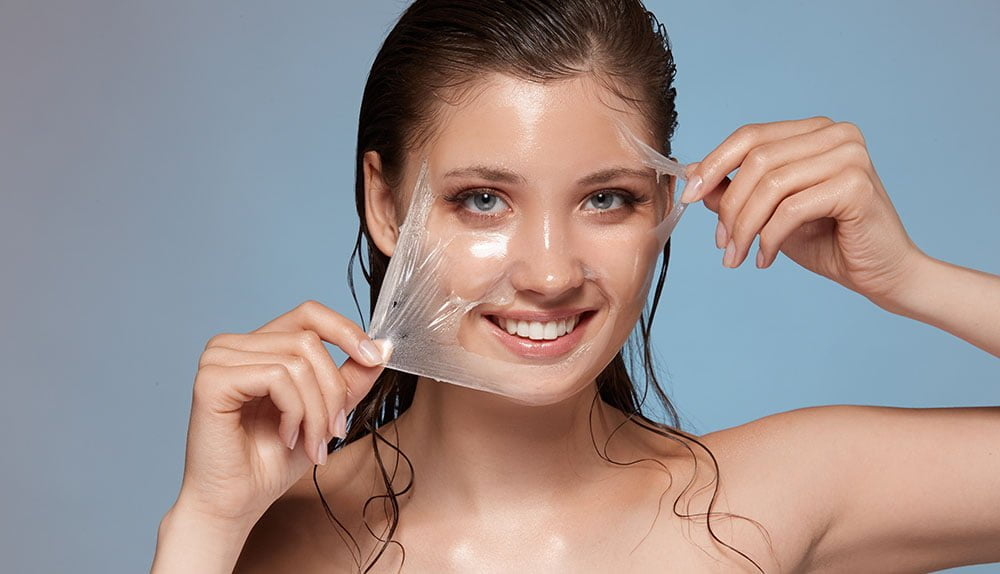Chemical Peels | Resurfacing
Light chemical peels are a perfect choice for patients wishing to create an even skin texture, reduce acne scars, fine lines, and mild sun damage

When it comes to plastic surgery, many patients look to a chemical peel for returning to a more youthful skin texture. Peeling or chemical skin peels and other skin treatments have been performed for many years to treat a variety of skin disorders. Conditions such as sun damage, wrinkling, and uneven pigmentation may be treated with these non-invasive techniques. Chemical peels also reduce acne and acne scars, eliminate sun damage and produce an even skin tone. Chemical peels are non-invasive facial plastic surgical procedures.
There are many different techniques and regimens for the application of chemical-peeling and skin treatment medications. Numerous chemicals can be used to achieve a skin peel (e.g. phenol, trichloroacetic acid – TCA, glycolic acid). All chemical peels work to exfoliate damaged outer layers of the skin. In general, the depth of the peel can be light, medium, or deep. The benefits and risks correlate with the depth of the peel. As with all cosmetic procedures, chemical peels involve an unavoidable risk of wound healing problems with the possibility of permanent scars.
Chemical skin peels and other skin treatment procedures are not an alternative to skin tightening surgery when indicated. In some situations, chemical peels may be performed at the time of other surgical procedures.
Light Chemical Peels: Risks and Benefits
Light chemical peels are performed with alpha-hydroxy acids. The solution is made according to the chemistry of your skin. Commonly referred to as AHA peels, light chemical peels are a perfect choice for patients wishing to create an even skin texture and reduce acne scars, fine lines, and mild sun damage. The result is fresh-looking, healthier skin. The AHA peel treatment is performed in an outpatient facility and takes as little as 15 minutes. Side effects are mild and patients can immediately return to normal activities. Following the procedure, the patient may feel slight irritation or redness. Flakes and dryness are other common side effects. Because the AHA peel is mild compared with other chemical peels, your treatment plan may require repeat treatments to achieve the desired results. Your doctor may also prescribe facial creams filled with alpha-hydroxy acids to maintain results. Sun protection is also necessary, as the skin is more susceptible to a chemical peel.
Medium Chemical Peels: Risks and Benefits
Medium chemical peels use solutions with trichloroacetic acid (TCA). The medium chemical peel, or TCA peel, penetrates deeper into the skin to reduce acne and acne scars. It also helps reduce wrinkles, fine lines, age spots, and other signs of sun damage. The TCA peel is a midpoint between mild and deep chemical peels. This type of chemical peel can also be used in various parts of the body. The procedure usually takes about 15 minutes. Depending on your circumstances, a medium peel may provide better results. But this level of cosmetic plastic surgery requires some recovery time. Following the procedure, the skin may begin to crust and form scabs. Patients may also experience facial swelling, throbbing, irritation, and redness. Recovery time usually lasts about one week. Keep in mind that while a TCA peel does not prevent you from producing pigment, slight discoloration of the skin is a possible risk. Your doctor may recommend a treatment plan, scheduling a series of TCA peels in intervals separated by a few months.
Deep Chemical Peels: Risks and Benefits
Deep chemical peels involve a one to a two-hour procedure performed with a phenol solution. Phenol peels provide a dramatic improvement to the skin, penetrating deep wrinkles, restoring pigmentation, and eliminating pre-cancerous growths. Follow-up treatments are not necessary and the results are long-lasting. Phenol peels require a lengthy recovery period. While you may be able to return to most daily activities after a couple of weeks, the healing period can take several months. Substantial facial swelling, crusting, and scabbing are common. Symptoms usually subside within the first two weeks. Phenol peels are not recommended for patients with dark skin or freckles. This type of facial plastic surgery permanently lightens the skin tone and can only be performed on the face. Treated areas will no longer be able to produce pigmentation. Sun protection is necessary indefinitely. Patients with a history of heart disease may not be eligible for a deep chemical peel. If you have a skin condition that produces cold sores, you will need to take medication prior to the procedure to avoid outbreaks. If your skin is prone to keloid formation, a deep chemical peel may not be an appropriate choice. An important thing to note about the chemical peel is that it will not stop your skin from aging. Chemical peels also cannot eliminate sagging skin.

